With temperatures in the 70’s it was a gorgeous second day of summer for Wandering Wednesdays. Each time we drove through Cuba, Missouri to places unknown we said, “let’s stop here sometime and see all the murals.” We never stopped . . . so today was the day to check out Cuba.
The visitor’s center was our first stop. They had a monument honoring the Osage Indian Legacy and the Trail of Tears. An Osage warrior stood over 21 feet tall. It was quite a sight and the story that goes along with these Indians and The Trail of Tears is quite saddening.
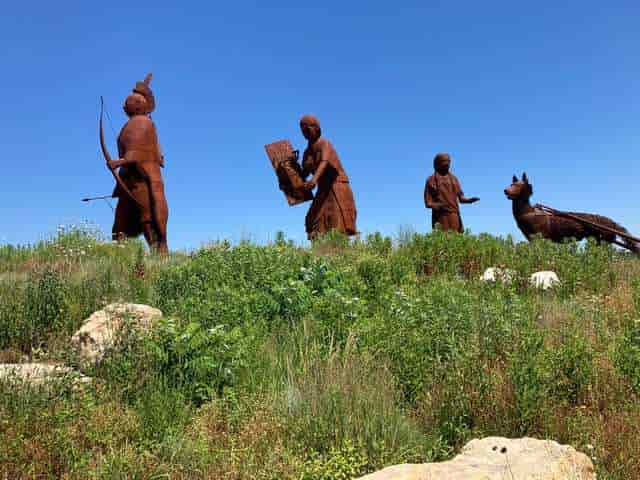
Lunch in Cuba, Missouri
On to the murals, but first we interrupt this thought for food. We drove to the Frisco Grill and Pub at 121 S. Smith Street. Inside the building was decorated as if it were a train or train station. On the outside the train engine was emerging through the front wall and on the inside the caboose was traveling into the wall.
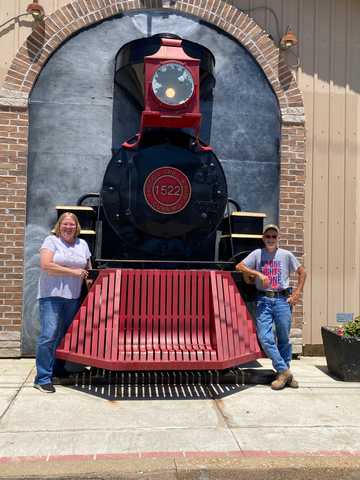
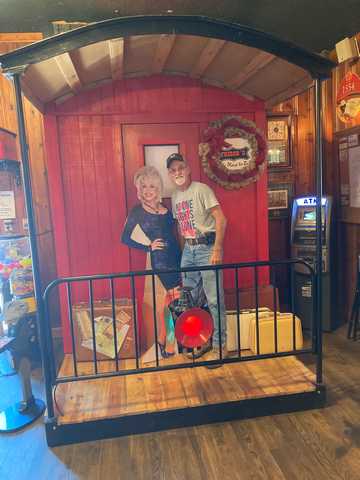
Dolly Parton was perched on the back of the train, so we took the photo opportunity, but she was so stiff she wouldn’t speak to Dan as he got his picture made with her. On the inside of the building the windows moved as if riding on a train. They had a scene of the old west rolling by. It was a delightful idea.
Lunch was delicious. I chose the roast beef sandwich and Dan had an Italian Sub. I found the homemade chips to be quite tasty as I snuck one off Dan’s plate. The waiter said the fries were shoe string fries, but he lied. I’m not saying they were not good, I’m saying they were not shoe string fries! I wish I had ordered the chips.
Down the street was charming little Amish bakery and enjoy the smell of fresh baked goods. The seating outside was ideal as we watched the people of Cuba go about their daily business.
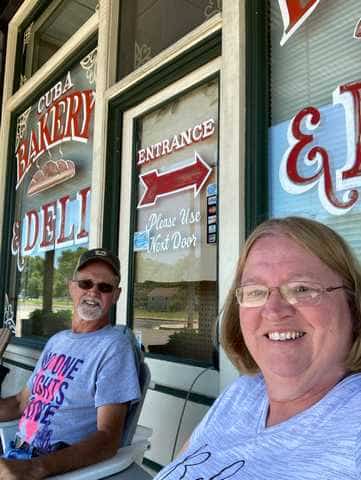
Now Really, on to the Murals
Peoples Bank mural depicted A. J. Barnett, the first cashier and president of Peoples Bank from 1920-1959.
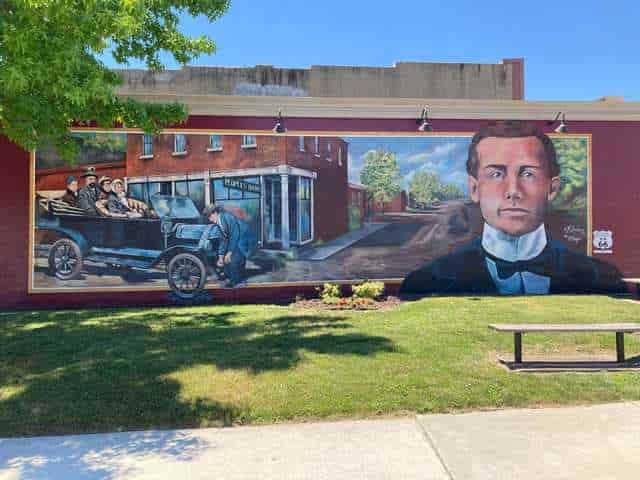
Cuba’s Gold Star Boys designated those killed in combat while on active duty in the armed forces during World War II. The gold star was worn by family members and a symbol of supreme sacrifice made by that person while serving his country.

The blue train car was called the Blue Bonnet, a Frisco Train named after the Texas state flower. The train was a major form of transportation from 1927-1967 and during World War II. The #7 train whisked away many of Cuba’s service men as they left their homes to protect our freedoms.
Apple Picking: From 1895-1920 the Apple King was Cuba. By 1900 Cuba was the largest producer, processor and distributor of apples in Missouri.
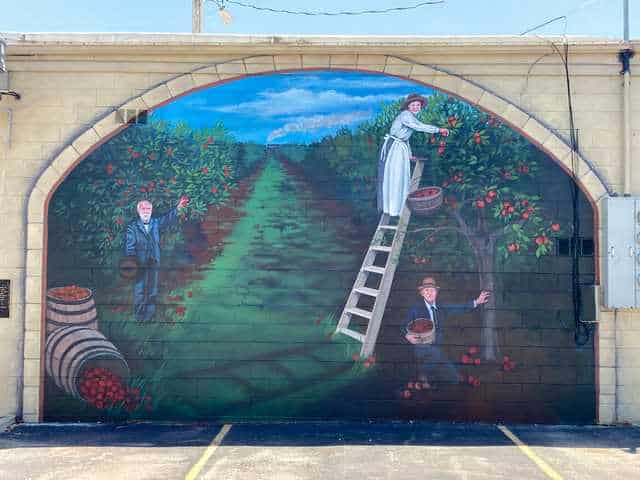
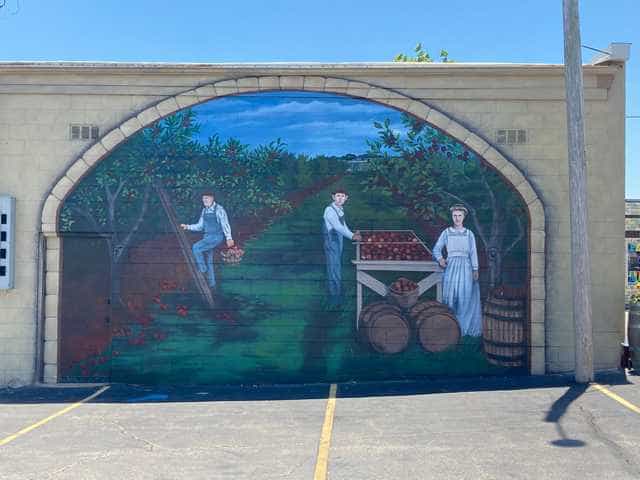
The County Fair mural depicted Senator Harry Truman when he campaigned in Cuba for re-election in a very close 1940 primary.
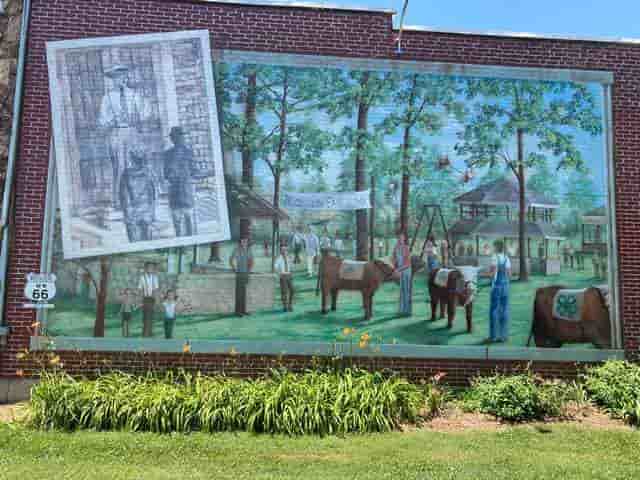
Amelia Earhart made an emergency landing in Cuba on September 4, 1928. Finding no damage to her Avro plane, she was able to continue her journey, but the town had kept her notoriety and memory of her landing alive through this beautiful mural.
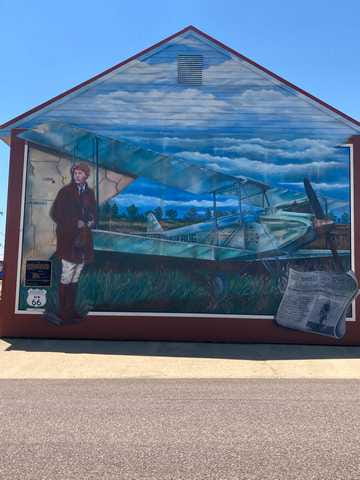
Al West, who was on a free-standing wall, was Cuba’s mayor from 1946-1958. During that time the city purchased the electrical system, paved and lit streets and extended its water and sewer system.
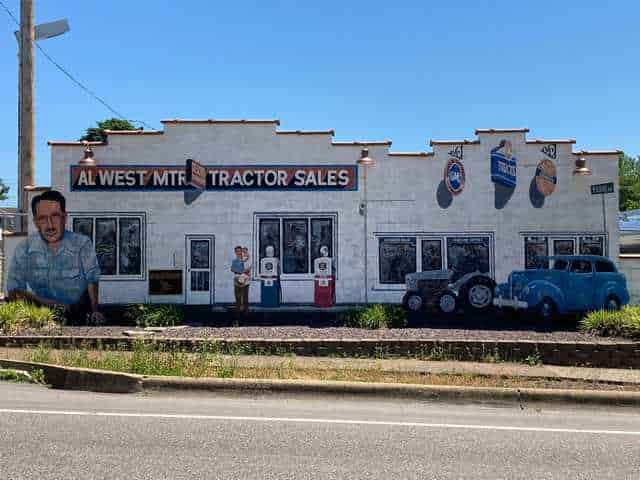
The Millworks recreated the look of the 1948 Roberts-Judson Lumber Company. The Millworks building was the site of custom woodworking and sheet metal production.
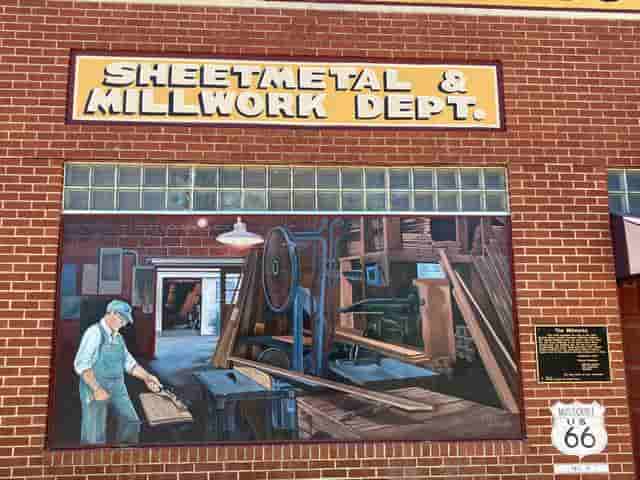
The river depicted the use of the river as a source of recreation, beauty and transportation. During the 20’s and 40’s many river resorts flourished.
In the 1900’s Prosperity Corner drew citizens to meet, do business and pass the time of day. H. H. Tieman’s General Merchandise Store was the hub of this activity.
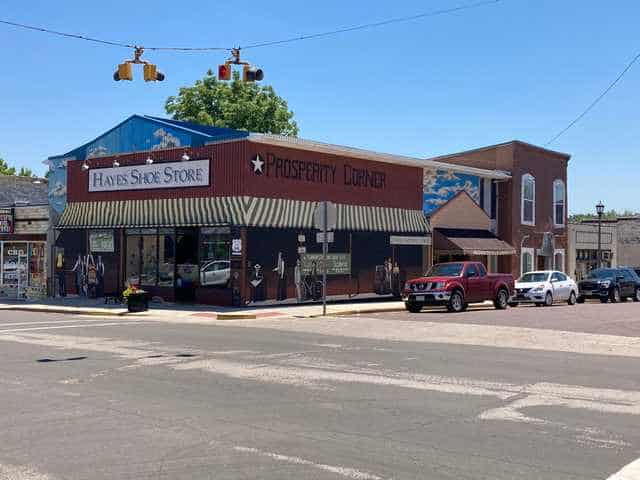
The Civil War murals illustrated conflicts between troops of Confederate General Sterling Price and Union General, Thomas Ewing, in September 1864.
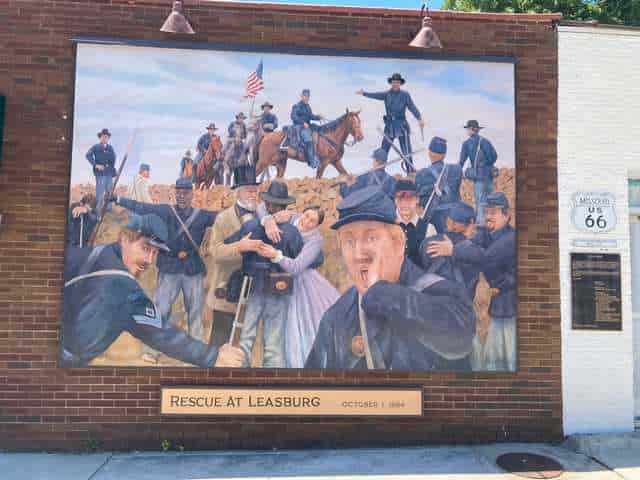

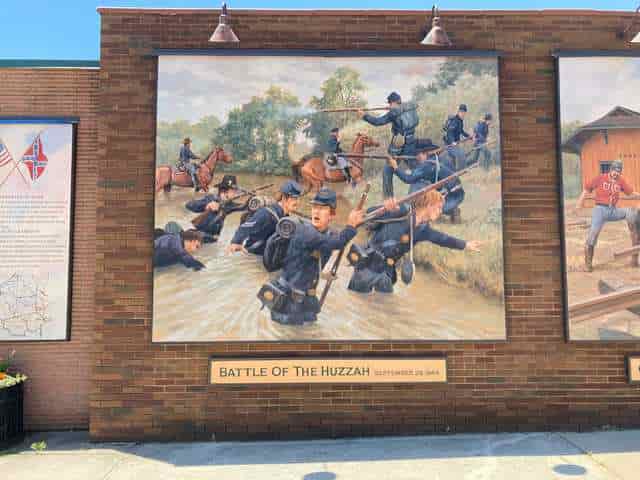

In November, 1948, Academy Award actress Bette Davis and her husband arrived at the Southern Hotel.
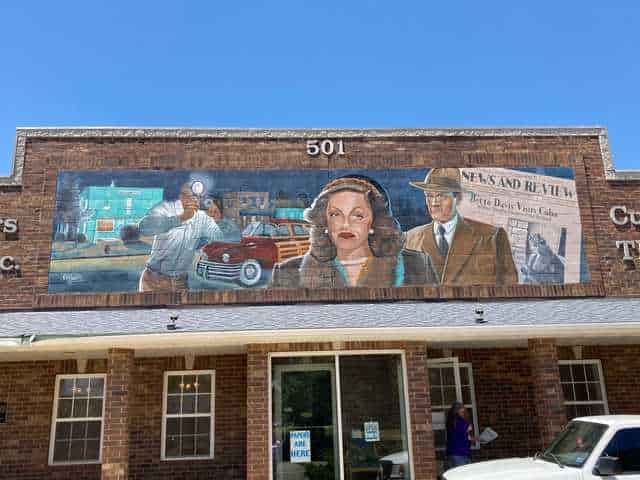
History at the 4-Way is where Paul T. Carr built this cottage style filling station in 1932. In 1968, Bill Wallis converted it to the first office for Wallis Oil Company.
Meeting in Missouri – The Osage were early inhabitants in this region with whom the French cultivated strong trade relations. The trails established by the Osage eventually became Route 66 and I-44.

A Day in Cooperage honored McGinnis Wood Products 50th Anniversary. McGinnis sold barrels worldwide from logs purchased within a 100-mile radius of Cuba.
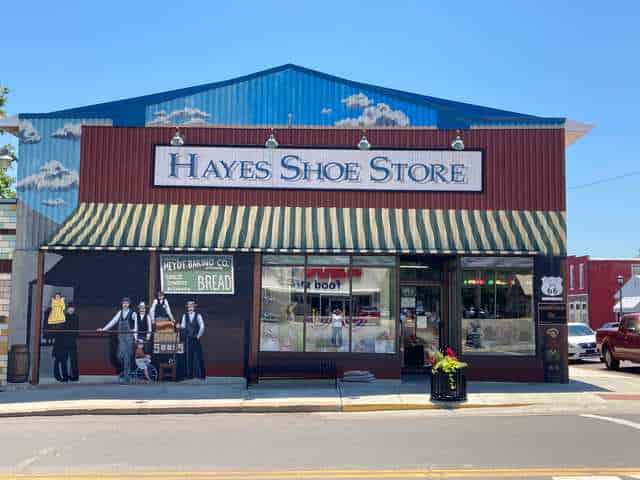
While near Prosperity Corner we stepped into the Hayes shoe store just to smell the leather. We were a little disappointed with the non-existing leather aroma, but did get to see Robert Wadlow’s size 35 shoes on display along with a full-size cardboard cutout of Mr. Wadlow. While alive, Mr. Wadlow visited DeSoto and my dad, and family got the privilege to see him while he was in town.
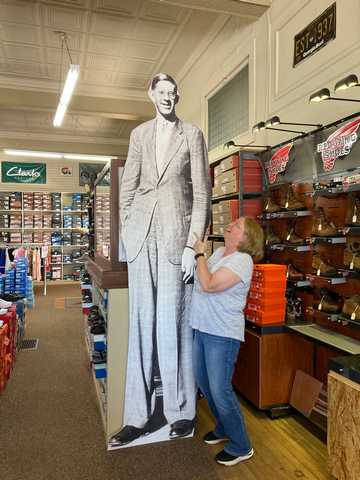
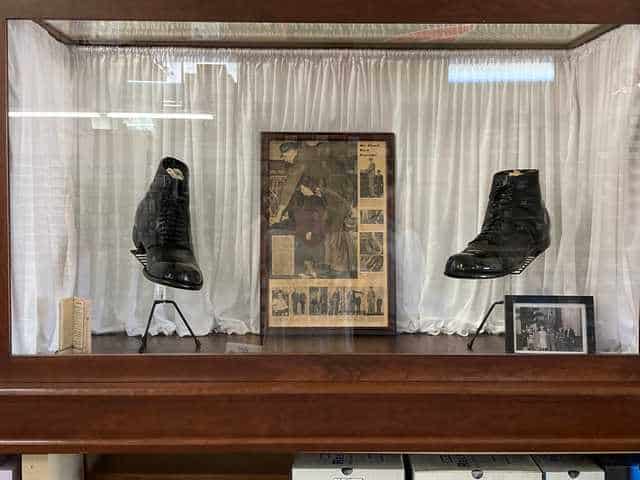
While at the newspaper office looking at the Bette Davis mural, we were told about the murals inside Dottie’s Restaurant. We drove over there and took a peek.
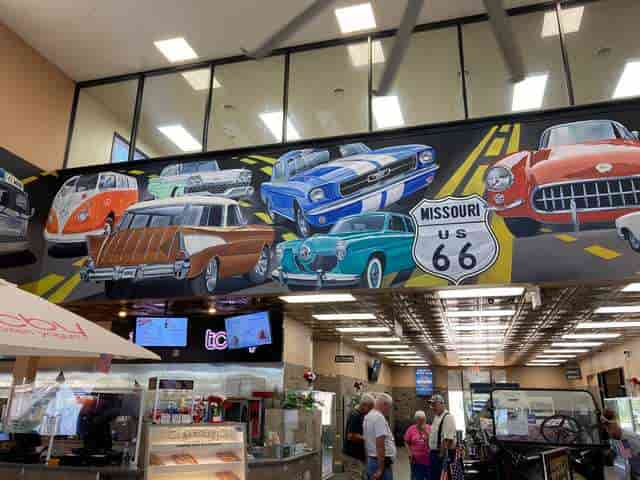
We noticed a couple Antique Malls near I-44 and stopped in to look them over. One building was pretty hard to look at because of the overcrowding of the items. The second building was much better. We made a purchase of a few things we thought we could not live without.
It was time to head home so on our way we stopped at our favorite Mexican Restaurant – El Tapatio in Leadington, Missouri. Their food never disappoints and the friendliness of the waitstaff kept us entertained throughout our meal. If you are ever in Leadington look up this little hole in the wall. You will love it.
